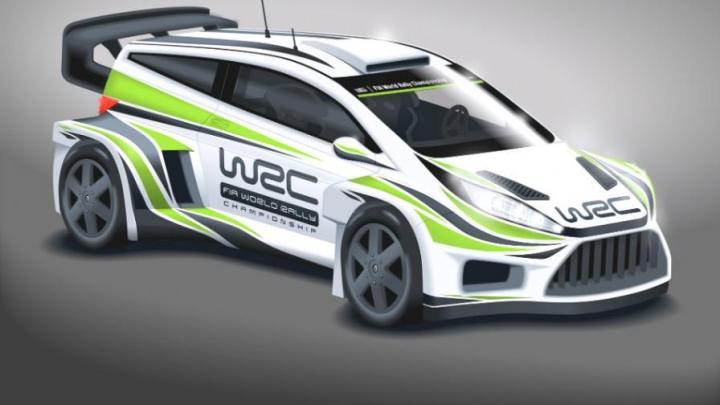
In two years’ time, WRC cars will look a lot more muscular because manufacturers will be allowed to design longer overhangs on both ends, along with a slightly wider body kit. The cars will weigh roughly 55 fewer pounds, and they will gain a brand new aerodynamic package that will include a noticeably bigger rear wing designed to create extra downforce.
2017 WRC cars will still be fitted with a turbocharged 1.6-liter, four-cylinder engine but there are a number of mechanical changes in store. For starters, the size of the turbo restrictor will be increased from 34 to 36 millimeters, a modification that will allow manufacturers to squeeze up to 380 horsepower — 80 more than today — out of the turbo fours. Additionally, electronically controlled center differentials are making a return.
A sketch published by WRC shows what the 2017 cars could end up looking like. The new regulations will be the first major changes to the race’s rules since 2011.
Broadly speaking, pilots have welcomed the new regulations.
“As a racing driver, you are always looking for more performance,” said reigning world champion Sébastien Ogier in a statement published on WRC’s official website. “I think the larger wing and new aerodynamics will give the car a bit more downforce, more grip and more speed going into the corners,”
2017 is shaping up to be an interesting year for rally fans. The cars will be lighter, faster, and much more aerodynamic, and Toyota has confirmed it will make a long-awaited return to the sport after a nearly 20-year hiatus. On the other hand, Paris-based Citroën has recently announced it will quit either WRC or the World Touring Car Championship (WTCC) at the end of next year for financial reasons.



